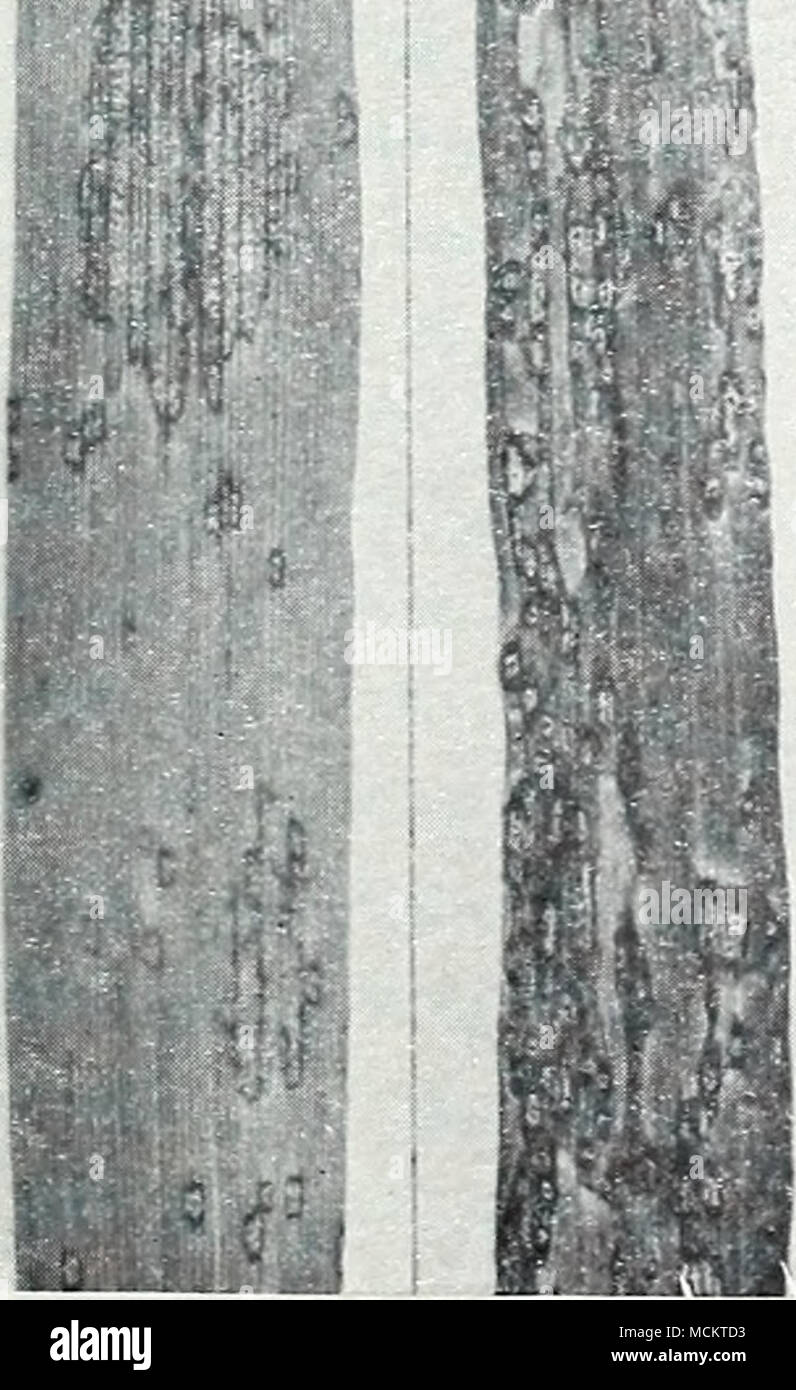. Leaf Spot Leaf spot, a fungus disease caused by Selenophoma bromigena (Sacc.) Sprague and A. G. Johnson, attacks smooth bromegrass. Initital infections appear as small, brown specks on the leaves early in spring. As lesions enlarge they become irregular in shape and size. Mature lesions are translucent in appearance, and black fruiting bodies develop at random in them (fig. 7). These are the pyenidia of the fungus, and in them masses of conidia are produced. The conidia are small, hyaline, slightly sickle-shaped, and are nonseptate. Mature pyenidia often drop out of the lesions, leaving pinh

Image details
Contributor:
The Bookworm Collection / Alamy Stock PhotoImage ID:
MCKTD3File size:
14.3 MB (494.3 KB Compressed download)Releases:
Model - no | Property - noDo I need a release?Dimensions:
1750 x 2856 px | 14.8 x 24.2 cm | 5.8 x 9.5 inches | 300dpiMore information:
This image is a public domain image, which means either that copyright has expired in the image or the copyright holder has waived their copyright. Alamy charges you a fee for access to the high resolution copy of the image.
This image could have imperfections as it’s either historical or reportage.
. Leaf Spot Leaf spot, a fungus disease caused by Selenophoma bromigena (Sacc.) Sprague and A. G. Johnson, attacks smooth bromegrass. Initital infections appear as small, brown specks on the leaves early in spring. As lesions enlarge they become irregular in shape and size. Mature lesions are translucent in appearance, and black fruiting bodies develop at random in them (fig. 7). These are the pyenidia of the fungus, and in them masses of conidia are produced. The conidia are small, hyaline, slightly sickle-shaped, and are nonseptate. Mature pyenidia often drop out of the lesions, leaving pinhole perforations. The disease is favored by periods of moist, cool weather and diminishes in severity as the season progresses, all but disappearing during the hot, dry period of midsummer. Figure 7.—Leaf spot on smooth bromegrass.